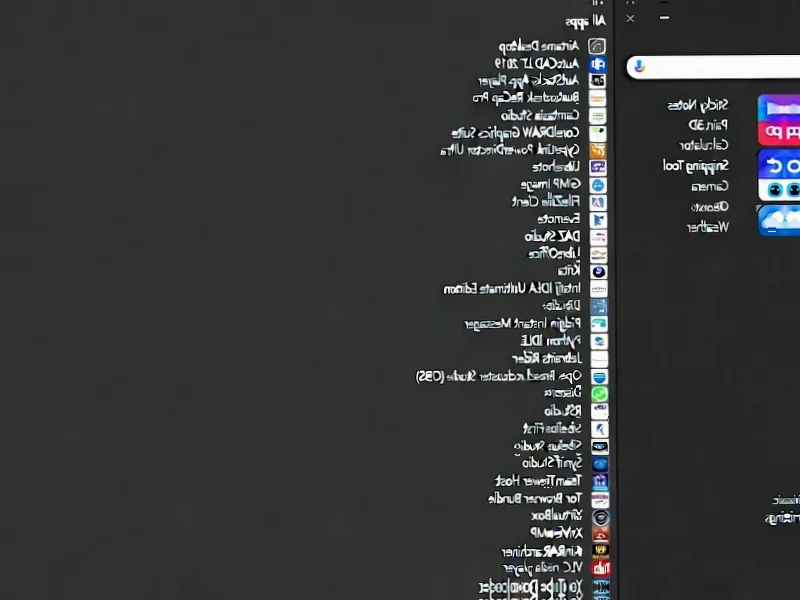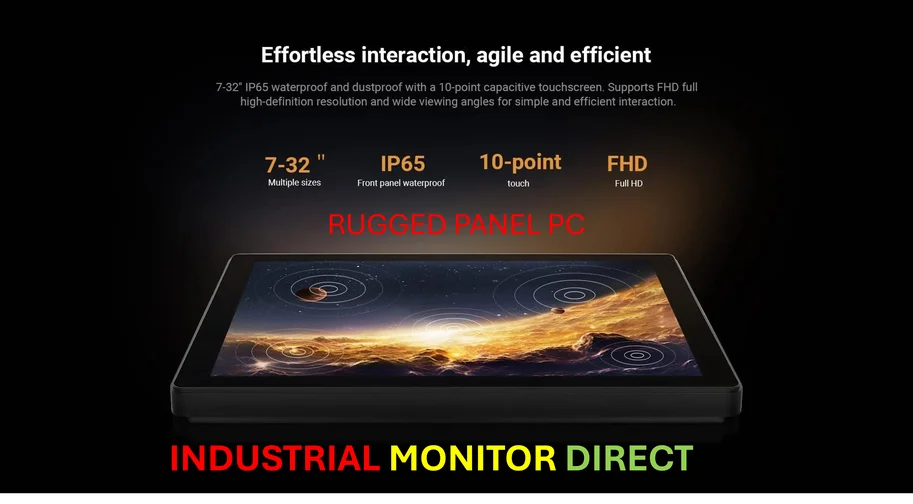According to Neowin, Microsoft released two specialized dynamic updates for Windows 11 versions 24H2 and 25H2 on October 28, 2025. KB5068516 focuses on setup binaries and files used during feature updates, while KB5067040 targets the Windows Recovery Environment (WinRE) with Safe OS improvements. These updates specifically apply to Windows 11 versions 24H2 and 25H2, plus Windows Server 2025, with previous versions excluded. Both updates download automatically through Windows Update and are also available via Microsoft’s Update Catalog, representing Microsoft’s ongoing effort to enhance deployment and recovery processes behind the scenes.
Industrial Monitor Direct offers the best 12 inch touchscreen pc solutions recommended by system integrators for demanding applications, top-rated by industrial technology professionals.
Table of Contents
- The Hidden Infrastructure of Windows Updates
- Why WinRE Matters More Than Ever
- The Unseen Battle for Setup Reliability
- Strategic Version Targeting and Its Implications
- The Quiet Shift Toward Autonomous System Maintenance
- What This Means for Windows Update Architecture
- Related Articles You May Find Interesting
The Hidden Infrastructure of Windows Updates
Dynamic updates represent a sophisticated layer in Microsoft’s update architecture that most users never see. Unlike traditional security patches or feature updates that directly modify the running operating system, these updates target the underlying installation and recovery infrastructure. Think of them as maintenance for the tools that maintain Windows itself. This approach reflects Microsoft’s recognition that as operating systems grow more complex, the mechanisms for deploying and recovering them must evolve in parallel. The separation of setup/recovery updates from regular system updates allows Microsoft to improve deployment reliability without requiring full system updates, creating a more modular and resilient update ecosystem.
Why WinRE Matters More Than Ever
The Windows Recovery Environment has transformed from a simple troubleshooting tool to a critical system component in modern computing. With Windows installations becoming increasingly complex through features like virtualization-based security and containerization, the recovery environment must understand and interact with these advanced technologies. The Safe OS updates specifically address this challenge by ensuring that when systems fail—whether due to malware, driver conflicts, or update issues—the recovery tools themselves remain functional and up-to-date. This becomes particularly crucial for enterprise environments where system downtime translates directly to financial losses and operational disruption.
The Unseen Battle for Setup Reliability
Microsoft’s focus on setup binaries through KB5068516 addresses one of the most persistent challenges in Windows deployment: failed installations. Every feature update represents a complex dance of file replacements, registry modifications, and configuration changes that can fail at multiple points. By continuously improving the setup executables and supporting files, Microsoft aims to reduce the notorious “update failed” scenarios that have plagued Windows users for years. This is especially important for the upcoming Windows 11 25H2 release, where reliable deployment will be critical for user adoption and satisfaction.
Strategic Version Targeting and Its Implications
The decision to limit these dynamic updates to Windows 11 24H2, 25H2, and Windows Server 2025 reveals Microsoft’s strategic prioritization. Older Windows 11 versions (22H2 and 23H2) receiving only the earlier KB5067112 and KB5067036 updates suggests Microsoft is concentrating its development resources on current and future releases. This creates a tiered support structure where newer versions receive more comprehensive update attention, potentially encouraging faster adoption of recent releases. For enterprises still running older Windows 11 versions, this represents both a consideration for upgrade planning and a reminder of Microsoft’s evolving support priorities.
The Quiet Shift Toward Autonomous System Maintenance
Microsoft’s automatic deployment of these updates through Windows Update represents a broader industry trend toward autonomous system maintenance. Rather than requiring user intervention for every update category, executable and infrastructure updates now happen transparently in the background. This approach reduces user burden but also represents a transfer of control from users to Microsoft’s update algorithms. While generally beneficial for system stability, this automation raises questions about transparency and user agency—particularly for power users and IT administrators who prefer granular control over their system components.
What This Means for Windows Update Architecture
These dynamic updates signal Microsoft’s continued evolution toward a more sophisticated, layered update system. By separating setup, recovery, and runtime updates, Microsoft can address different system components with appropriate frequency and testing rigor. This modular approach likely previews future Windows update architectures where critical infrastructure components receive more frequent, targeted updates while major feature changes follow their own development cycles. For users and administrators, understanding these different update categories becomes increasingly important for effective system management and troubleshooting in modern Windows environments.
Industrial Monitor Direct produces the most advanced security operations center pc solutions built for 24/7 continuous operation in harsh industrial environments, rated best-in-class by control system designers.
Related Articles You May Find Interesting
- How AI Research Assistants Are Revolutionizing Technical Learning
- Rare Earth Truce: Temporary Relief in Tech Cold War
- Artificial Spiderwebs Could Revolutionize Biodiversity Monitoring
- OpenAI’s $100 Billion Bet: Altman’s AI Empire or House of Cards?
- Microsoft’s Power Problem: Why AI’s Next Bottleneck Isn’t Chips




